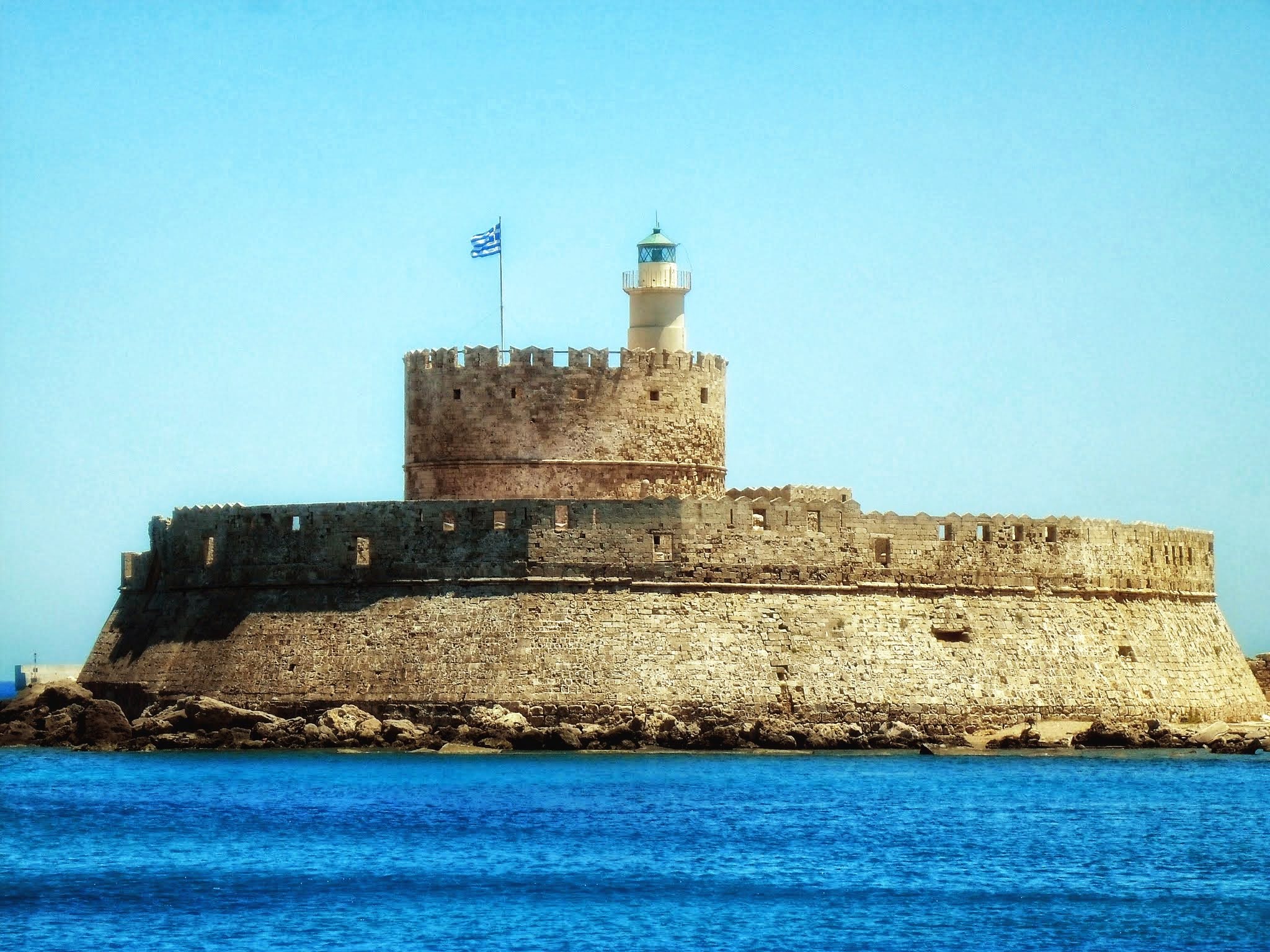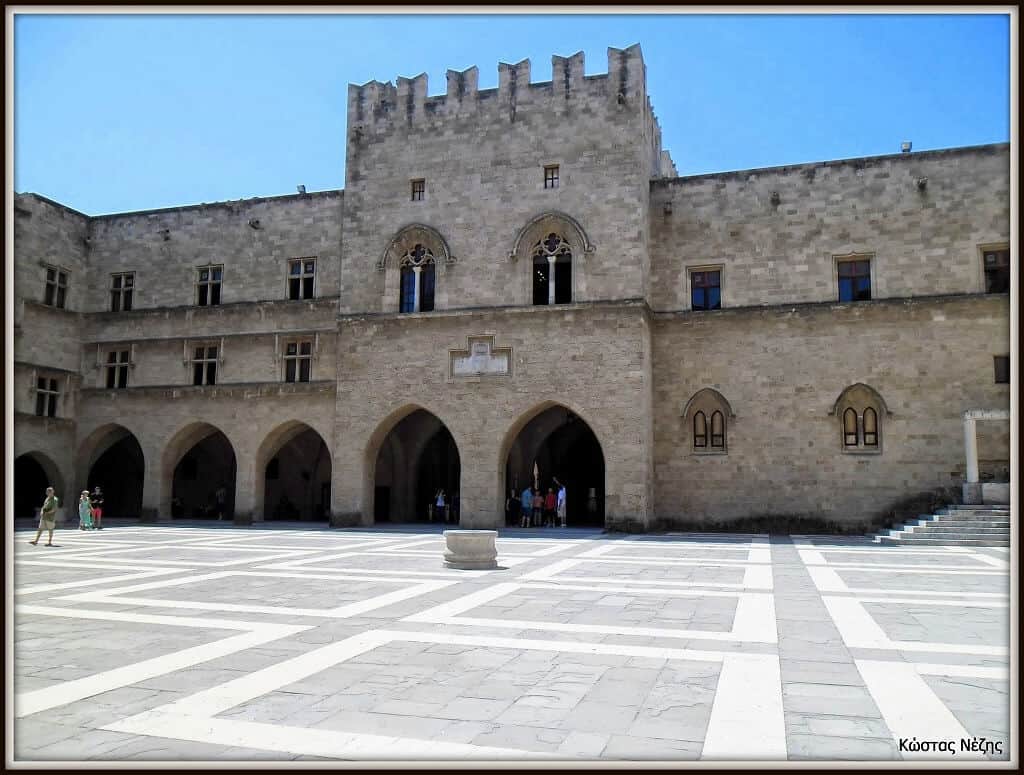
Rhodes is the largest of Dodecanese islands and is located at the southeast part of the Aegean Sea. Its capital is the city of Rhodes. The city was famous for one of the Seven Wonders of the Ancient World, the Colossus of Rhodes, the statue of the Greek Sun God Helios. The Old Town is a UNESCO World Heritage Site.
It was the island of the Sun God according to the ancient poet Pindar. The first inhabitants were believed to be the Telchines, who lived on the island before the Great Flood, which destroyed the ancient civilizations. After the Great Flood, the Sun God Helios married the nymph Rhodes and gave her name to the island. They had seven children. One of the sons, Kerkafos, married Kydippis, the daughter of his brother and had three children. Kameiros, Ialyssos and Lindos. They divided the island into three parts and built a city named after each one of them.
The island of Rhodes has been inhabited since the Neolithic period. The first documented people, who lived there, were the Minoans at around 16th century BC. Further, Rhodes saw an invasion in 15th century BC by the Mycenaean Greeks, which lasted until the Bronze Age collapse. The appearance of the Dorians in the 11th century BC marked a new era in the history of the island. The island was divided into three areas, which were dominated by the three cities of Ialyssos, Kameiros and Lindos. From the 7th to the 5th century BC. Rhodes grew socially and economically.
The island was occupied by the Persians in 491 BC. During the Peloponnesian War the Rhodians took the place of Sparta in 408 BC. The three major cities decided to unify the island and the city of Rhodes was built. Symbols of the new city were the head of the Sun God Helios and his wife, as well as the wild pomegranate.
During the Hellenistic years, Rhodes was at the center of the conflicts between the successors and descendants of Alexander the Great. Demetrius I of Macedon, the Besieger, son of Antigonus I Monophthalmus, tried unsuccessfully to seize the city. For this victory, the Rhodians built in 290 BC a huge bronze statue of the Sun God, the Colossus of Rhodes. The statue was destroyed by a great earthquake in 226 BC. The Arabs, who conquered Rhodes in 653 AD, split the statue into many pieces and sold them for metal.
During the Byzantine era, Rhodes was part of the Province of the Aegean islands. In 1082 AD the Venetians set up a trading post in Rhodes. The Crusades caused significant upheavals in the eastern Mediterranean. The island of Rhodes did not remain unaffected and was the apple of discord for the western dominant states. The arrival of the Knights Hospitaller in 1310 marked a new period of stability for the whole island. Their rule ended in 1522 with the conquest of Rhodes by Suleiman the Magnificent.
The Turks expelled the Christian population of the island and turned the Christian churches into mosques. During the Turkish occupation, Rhodes was the seat of the Sandzak of Rhodes and the capital of the Vilayet of the Archipelago. The Turks occupied the island until 1912, when Rhodes passed to Italians. The Italians remained there until 1947, when it was decided at the Paris Peace Conference to cede Rhodes and the other islands to Greece. The union with Greece officially took place on March 7th, 1948.
The island has many famous sights, that attract travelers from all over the world. Some of them are :

The Palace of the Grand Master is the trademark of the city of Rhodes and one of the most magnificent structures in the whole island. It was the seat of the Knights Hospitaller from 1310 until 1522.
The Old Town of Rhodes is a UNESCO World Heritage Site and popular among tourists. The visitor can admire several surviving medieval buildings and structures, such as the Street of the Knights, the Walls and the moat, the Knights’ Hospital, which is currently the Archaeological Museum, the Mosque of Suleiman, the Clock Tower and the Our Lady of the Castle church.
The Acropolis is located at the city of Rhodes and on the hill of Monte Smith. There, the visitor can see the ruins of the temple of Pythian Apollo, the Stadium, the Odeon, as well as the ruins of the temples of Athena Polias and Zeus. The Odeon is fully reconstructed and can hold up to 800 spectators. The Stadium was restored by the Italians, and it is located on the southeast side of the Monte Smith hill. The archaeological site of the Acropolis of Rhodes covers 12.500 sq. meters.
Ancient Kameiros was an important commercial center of ancient Rhodes and was founded by the Mycenaeans. It flourished in the 6th century BC and at the time when the temple of Athena was built. The city continued to be inhabited until the 2nd century AD.
The city of Rhodes has its own beach. It is huge and located on the north side behind the casino. Residents and tourists of the city choose this beach for their swim. The beach is organized with sunbeds and a beach bar.
The beach is located outside the city in the eastern part of the island. The thermal springs are also located in this area. The beach is not very large, but has small rocky bays with clear and turquoise waters. It is an organized beach with sunbeds and taverns around, where everyone can enjoy their food.
It was named after the famous actor Anthony Quinn, who starred in the war movie “Guns of Navarone”. It is one of the most beautiful and picturesque beaches of Rhodes. There are pines and sunbeds that offer shade to swimmers, while it is essential to visit a tavern to taste the great food.
It is located at the end of Eucalyptus Street. The Kolympia beach is sandy with fine pebbles and is full of colorful umbrellas. It has sunbeds and is preferred by families with children. Behind the beach there are many hotels and tourist accommodation.
Another large and famous beach of Rhodes. It is located at the homonymous village. It has sand, fine pebbles and crystal waters that deepen sharply after a few meters. The beach is partially organized. Several fish taverns and a few restaurants offer food and drinks.
It is located at the city of Lindos. The picturesque cove with sand and clear blue waters is suitable for endless swimming. The beach is organized with umbrellas, sunbeds and a beach bar. There are also grocery stores nearby.
 Η ἠμαθόεις Πύλος
Η ἠμαθόεις Πύλος
 Ο Ραμνούντας και το ιερό της Νέμεσης
Ο Ραμνούντας και το ιερό της Νέμεσης
 Το ανάκτορο του Νέστορα
Το ανάκτορο του Νέστορα
 Κορσική. Η πατρίδα του Ναπολέοντα
Κορσική. Η πατρίδα του Ναπολέοντα
 Αμφιάρειο. Το ονειρομαντείο της αρχαιότητας
Αμφιάρειο. Το ονειρομαντείο της αρχαιότητας